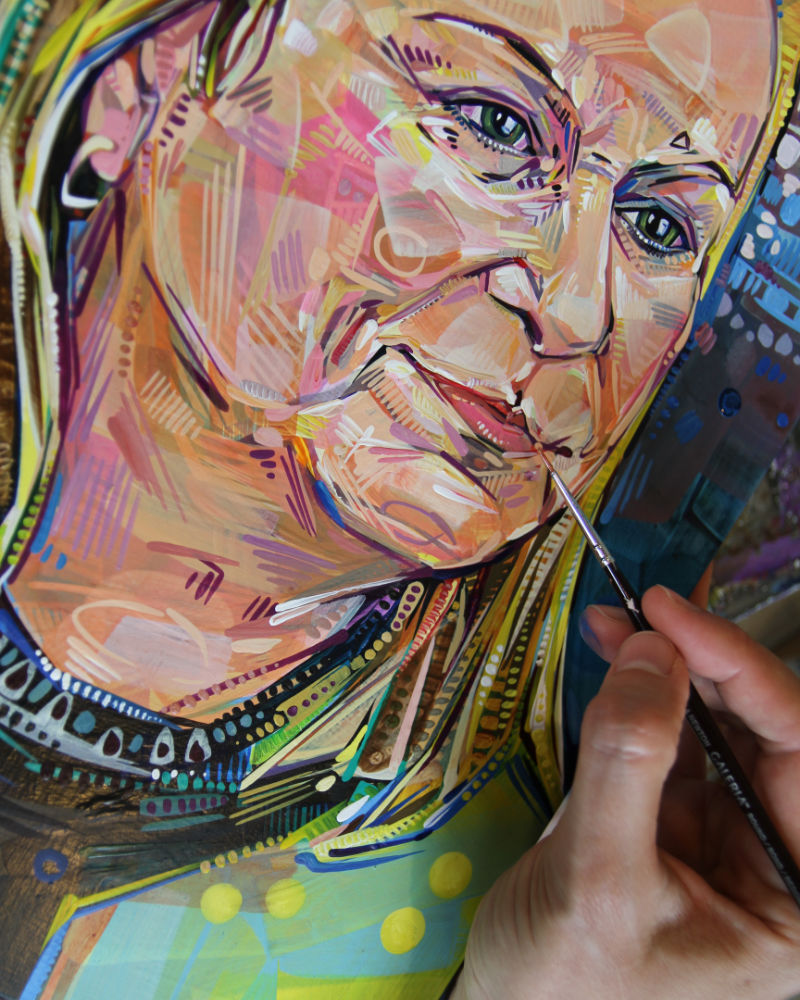Blog / 2019 / Tips for Painting Portraits from Other People’s Photos
June 12, 2019
I’m contributing to a book about collective bargaining and how it can be used by more than just labor unions. I’m painting portraits of the workers whose stories are featured in the book, learning about all kinds of things along the way—everything from the strange intimacy of certain kinds of labor to the things that the labor movement and art have in common.
But today’s post is something else again, because two of the portraits that I am working on for the book are of people I didn’t get to meet. Over my 16 year career, I’ve painted people by looking at someone else’s photo now and again, but it’s really pretty rare. I have certain rules for my art-making and, though I do break them, they are my rules for a reason. And one of them is that I like to meet the people I will paint, because I’m more interested in representing how people move and breathe than in depicting exactly what their noses look like.
How to paint from other people’s photos:
- Direct your photographer.
- Get a look at as many photos as you can.
- Use videos.
You may not have any control over the photos you will work from, but, if you do, try to educate your photographer about your needs.
For example, generally speaking, people slouch when they get comfortable. Because I am fascinated by how people hold themselves, the way a person slumps can be interesting, but it’s usually not as revealing as the way they present themselves when they are more aware. I almost always ask to take a few photographs of my subjects standing, and I like to have standing photos when other people are taking pictures for me as well.
Other instructions you might give could include suggestions about lighting or wardrobe. For example, do you like to paint baseball caps? Or would you rather that the photographer ask for it to be removed?
This is easier today with the help of social media. Even if I’m not looking for a photo that I will work from, I love combing through the pics that subjects post of themselves online because it gives me an excellent idea of how they see themselves and how they would like for others to see them.
The two subjects that I didn’t get to meet for this project have both been interviewed many times, so it was easy to find video of them talking about their cause. These moving images are packed with information about how they move and breathe.
And for Cynthia’s portrait (see below) I am actually working from a screenshot I took of one of the videos. I made this choice because, when I compared the photos I was given with the person I was seeing in the video, something didn’t add up. I am guessing that Cynthia doesn’t love having a camera pointed at her. She was able to forget that she was being recorded in the video situations and that allowed her to be more herself.

UPDATE
March 10, 2022
You can see all the paintings from the book about collective bargaining here and The Future We Need is now available!
Maybe this post made you think of something you want to share with me? Or perhaps you have a question about my art? I’d love to hear from you!
To receive an email every time I publish a new article or video, sign up for my special mailing list.
If you enjoyed this post, Ko-fi allows you to donate. Every dollar you give is worth a bajillion to me!



